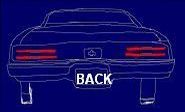 |
 |
|
 |
 |
 |
 |
 |
 |
 |
 |
 |
 |
 |
 |
 |
Gasoline: |
| |
| Raw crude oil is put through a distillation process. |
| The
end result is a multitude of petroleum products. Gasoline is one of
those. This mixture of more than one hundred different hydrocarbons
is rated. The American Society for Testing and Materials (ASTM) has
three categories used to group the quality of gasoline. Volatility,
Octane, Additive derived. The volatility of gasoline is controlled
to prevent poor engine performance. Low volatility will cause poor
cold engine starting. High volatility will cause excessive vapor at
high temperatures (vapor lock). |
| An octane number is a rating scale that indicates the gasoline's ability, to prevent
excessively rapid combustion of the last of the burning mixture in the cylinder. A
high rating would indicate a better performing gasoline. In the early years, lead
was added to control this detonation. Due to undesirable emissions, the lead
additive was replaced in 1975. |
| The
quality of octane in gasoline can be measured by two laboratory procedures:
1) Research octane numbers (RON) relates to low-speed, full throttle
performance, 2) Motor octane numbers (MON) relates to cruising and
moderate acceleration. |
| To
get an octane rating for road use both methods must be added. The
on- the-road equation is what appears on the gas pump. (Road On= a
(RON) + b (MON) +k). Additives range from oil-soluble dyes used to
color code the different grades of gasoline, oxidation inhibitors,
organic rust inhibitors, water dispersers and other detergents. These
additives keep the fuel system and engine running clean and smooth. |
| |
| |
| |



